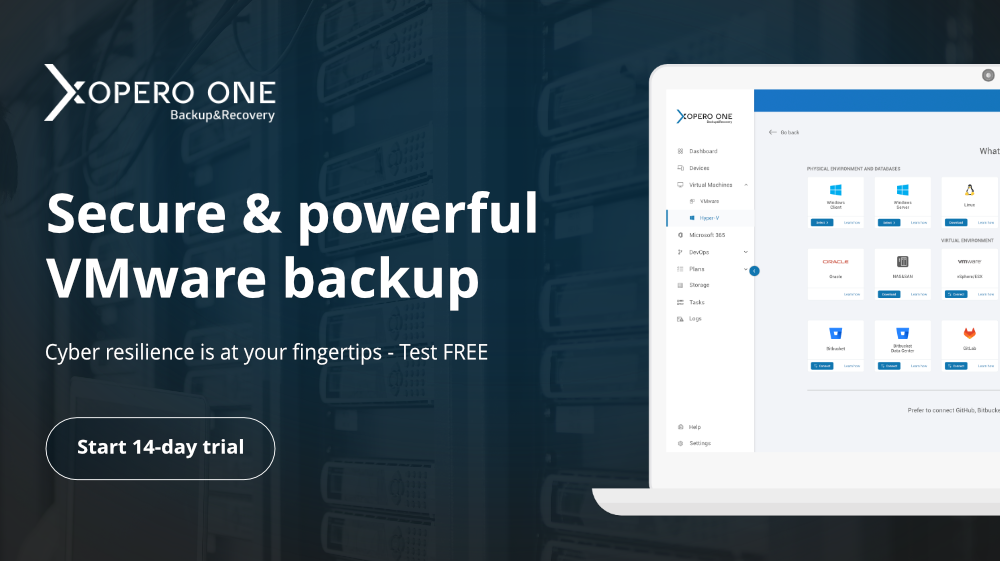VMware is currently leading the way on the market, and this is an unquestionable claim. Suffice it to say that, according to some statistics, VMware’s share in the hypervisor market exceeds 70%. But what really makes vSphere such a desirable product, and where does its strength come from? Are its technologies such as High Availability, or maybe we, the customers, decide about the power of this product?
After all, it’s VMware
Since its inception, VMware has been highly respected in the IT industry, and this is due to one very significant factor. All this trust in the company has been built on the reliability of the VMware hypervisor. ESXi servers, which are the backbone of the entire virtual ecosystem, are relatively easy to install. In most cases, they do not require additional drivers or personalized BIOS settings. This simplicity and intuitiveness when installing the ESXi server itself are essential, but most importantly, the reliability already mentioned is the real key here. In the industry of specialists in virtualization of all kinds of infrastructure, the question asked is why VMware? One of the most common answers is: after all, it’s VMware. Let us consider these words for a moment because they are one of the main factors in the strength of the vSphere hypervisor. VMware managed to win the hearts and minds of specialists, and it just looked like an easy task. However, thanks to the fact that from the very beginning, when ESXi servers were ESX servers, the company made sure that their product was reliable, it has become a synonym of reliability.
High Availability (HA) technology
The introduction of technologies such as High Availability is a perfect example of this. Suppose we have three hosting ESXi servers managed by a vCenter server with an active HA service. With such a configuration, as long as the resources allow, we are pretty well secured, and it can be safely said that our infrastructure meets the minimum redundancy. In the event that one of the physical ESXi servers, which is part of such a farm, fails, the monitoring HA agent will automatically migrate virtual machines to working servers. This is, of course, a considerable advantage, and it is also achieved thanks to the fact that the virtual machine itself, along with the configuration files, is on a shared pool of resources. In addition, most IT specialists set up virtual machines so that immediately after the migration process, vCenter starts them. Thanks to this, the downtime is as short as possible in the event of such a failure. The entire process, if properly configured, takes place without human intervention, and this is undoubtedly a great advantage of this failover solution proposed by VMware.
Pessimistic scenario
Let us present an even more complicated case. Suppose we have two ESXi hosts managed by the vCenter server, which is on one of them. As part of the service work, we are forced to shut down our server farm. Of course, we try to do it with the least possible loss for our clients, so we transfer virtual servers to one of the hosts, which are required to maintain business continuity. Then we entered maintenance mode and shut down the ESXi host. We light the proverbial led that identifies the physical server in the server room. A young IT employee reports to such a shutdown and maintenance task. At this point, an apparently tragic event occurs. Our so-called hero of the day turned off the wrong physical ESXi server (Who among us was not there). Within seconds, we realized that our entire farm with virtual machines had just disappeared. In addition, the ESXi host with machines turned on was disconnected from the power supply in a Hard Shutdown manner. With an utterly physical infrastructure, such an event could be disastrous. However, we think that fortunately, it’s VMware. We asked our colleague to calm down and turn on the server again. After this action, the ESXi server will start, and then, if the automatic start-up of virtual machines has been configured, they will be started up. An interesting fact here is that it may happen that if the HA were running, at the first moment after logging into the freshly initialized vCenter server, we would not see any machines. Be calm, though. The HA agent will make the devices reappear on the working host.
But where does this strength come from?
I honestly admit that this will be entirely my subjective opinion, but the strength of VMware and its products does not come from Snapshot or HA technologies, or at least they do not translate directly. I believe that the most important thing is how willingly a given product is used, and when it comes to VMware, we can see it at every layer of the IT world. We are not talking about individual clients, but about corporations such as Dell, Fujitsu, etc. In the portfolios of these companies, we can find many products or complete solutions based on VMware and pre-installed vSphere. I mean servers that have a hypervisor installed on the memory integrated with the server’s motherboard. Products such as Dell VxRail are in great demand. The strength of VMware should be measured by how many companies use its products in their own solutions, and there are a lot of such companies.
VMware doesn’t stop there
In each case, whether we build our own virtual infrastructure based on a hypervisor from VMware, or buy a finished solution from a company such as Dell with vSphere on board. In each of these cases, this is just the beginning of our journey, and at the end of it, the backup system should be as reliable as VMware products. Xopero offers a VMware backup solution that will allow us to feel as safe in the case of our backups as in the case of vSphere from VMware when virtualizing our infrastructure.


